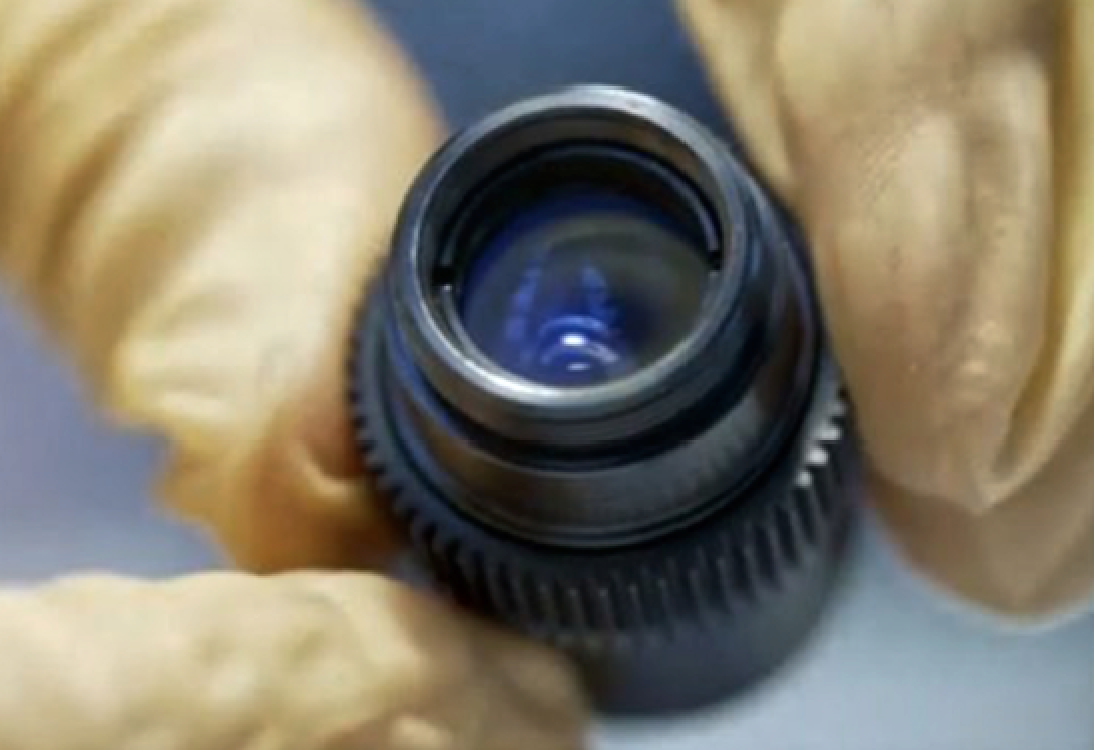Designing optics for micro- and nanosatellites
The smallsat market has seen significant growth in the past few years driven by a desire to reduce satellite costs and the increasing availability of miniaturized technologies.

A recent, published report has forecast that the global market for nanosat, ellites and microsatellites is expected to grow from $2.8 billion in 2022 at an annual rate of nearly 20% over the next five years.
A nanosatellite is any satellite weighing between 1 and 10 kg, whereas microsatellites weigh between 10 and 100 kg. These satellites are used for a growing range of applications that include remote sensing, Earth Observation (EO), data communications, scientific analysis, and security / surveillance.
As satellites decrease in size, there is the necessity for the optics that lie at the heart of nano and microsatellites to reduce in size and weight. This is not always a straightforward task, as quite often the satellite sensor has already been selected and is 2/3- inch format or larger.
A rule of thumb for optical design is the larger the sensor format, the larger the lens. That is, unless you are willing to reduce the aperture of the lens. Consequently, if you are developing a camera system for a smallsat-based space mission, keep your sensor compact and then it will be possible to keep the lens compact, as well.
As the available space for optics in nano- and microsatellites is often a challenge, this also has an impact on designing a lens with an appropriate focal length. For instance, if you require your lens to have a focal length of 300mm, then you should expect the lens to be approximately 250mm in length.
An alternative optical strategy would be to use a catadioptric or mirror lens. Such lenses are diffraction limited, so offer good resolution; however, they typically start at f/3.5, depending on the central obstruction. The overall length of a catadioptric or mirror lens will be shorter, but the diameter will be larger than a conventional lens design.
Being able to keep the size of the lens compact also helps them withstand vibration and shock during launch into space, as the mass is small. To ensure your nano- or microsatellite optics are sufficiently robust, all elements in our space-ready optics are secured and unable to break loose when subjected to the rigors of launch and other environmental factors.
Currently miniature optical systems for nanosatellites and microsatellites have lower resolution capability compared to dedicated optics installed on large, Earth remote sensing systems.
However, the considerably lower cost of smallsats incorporating compact, low weight optics allows them to form the basis for large-scale orbital constellations made of hundreds of such devices.
The development of nano and microsatellite constellations enable Earth monitoring in near real-time mode, allowing you to quickly obtain images of your target part of the Earth surface without waiting for a large remote sensing satellite to reach the desired location.
This immediate monitoring capability will be valuable in applications that include military surveillance in a changing scenario, monitoring spreading disasters (wildfires and flooding) as well as for observation of maturing agricultural crops.
There are a number of key advantages with ‘application-optimized’ custom optical design.
Whether you are designing a new product, or looking to extend the life of an existing optical product, opting for a custom, optical design can minimize any compromises by designing the lens from the ground up to exactly match your needs.
Key advantages of ‘application-optimized’ custom optical design
Design parameters that can impact the suitability of a lens for your camera, optical instrument or sensor include:
Size — increasingly optical applications are constrained by a lack of space in which the measurement device can be situated. Keeping lens design compact is a specialty of Resolve Optics.
Format — Sensors are constantly evolving with a notable trend towards non-standard standard formats. Custom lenses are often the only choice if you want an optical system optimized to leverage top performance from a non-standard format sensor.
Resolution — to gain more information from an optical measurement typically requires higher resolution. Achieving highest possible resolution is rarely done with a standard off-the-shelf lens.
Aperture — Lens performance is affected by how much light you can get through it — this is commonly known as the lens F-number. Custom lens design helps you achieve the maximum F-number within the constraints of your application
Wavelength — Most applications have a key bandwidth or wavelength at which optical measurement / sensing is optimally carried out. Rarely do off-the-shelf lenses provide peak performance in the key bandwidth / wavelength for your target application.
Lens housing — Some applications and operating environments place great demands on an optical system. Consequently, having a custom lens housing or mounting arrangement can, for instance, minimize the detrimental effect of vibration or shock.
Security of supply — Deciding to incorporate an off-the-shelf lens into your optical product may seem like a good idea, but it offers you no security of supply. A key consideration for many companies when choosing a product is security of supply. With a custom lens design from Resolve Optics, there is no risk of the lens ever being discontinued, for as long as you keep placing orders, we will continue to manufacture the lens.
While selecting an ‘application optimized’ custom lens design has many advantages, if a suitable off-the-shelf lens is available, we will always make this known to you.
Using zoom lenses in space... overcoming the difficulties
Currently, almost all spaceborne optical systems are based on fixed focus lenses and mirrors... why does this occur when zoom lenses offer so many advantages?
One of the biggest advantages of using a zoom lens is that they allow you to change focal lengths without changing your lens. A zoom lens provides a range of variable focal lengths which can be adjusted using the zoom ring on the lens.

Because of this inherent versatility — zoom lenses are complex, with lots of close tolerance components sliding and rotating within each other. This is fine under normal conditions, but at extremely low and high temperatures, or in the vacuum of space, producing these movements presents a challenge.
For the components of a zoom lens to move smoothly, typically grease must be used. Today, modern synthetic greases are much better at not stiffening in cold environments or melting and running when hot. There are also special greases specifically designed for use in the vacuum of space, but these greases tend to be thick and not usable for the fine mechanics you find in zoom lenses.
To address this issue, Resolve Optics has developed an optically corrected, zoom lens. This new design concept reduces the moving parts of a zoom lens to just a single push pull movement.
This innovation eliminates the need for complex cams and tubes in tubes that are required in traditional zoom lenses. Our optically corrected zoom lens design also maintains focus and resolution throughout its zoom range.
While our optically corrected zoom lens design has limitations, such as the zoom range being limited to approximately 4x and they do not cope well with very wide angles, it shows real promise for use in spaceborne applications.
Designing optical systems for use at elevated temperatures
When designing an optical system, you must consider the environmental operating conditions of the application. Typically, optical designs are designed to work at an ambient temperature of around 22° C. Such a design will probably work just fine from 0 to +50° C, but any lower or higher temperature and you would probably start to note that the image is going out of focus.

It is widely recognized that when materials heat up, there is expansion. This rate of expansion differs from material to material. To avoid an optical system going out of focus at elevated temperatures. you must carefully consider the rate of expansion of both the components and air spaces.
Higher temperatures will also affect the refractive index of optical materials. To account for optical variations introduced by such physical property changes in materials, systems can be athermalised.
The technique of passive athermalization works by selecting lens and housing materials that will compensate for the overall change in optical system performance.
The simplest way to do this is to choose materials for the optics and mechanics that have low coefficient of thermal expansion and low thermal coefficient of refraction values. When used correctly — passive athermalization will minimize the effects of temperature change on the system and allow your lens to maintain its focus.
Over the last 20 years, Resolve Optics has accumulated the expertise enabling the company to design and manufacture specialist optical systems that operate effectively at up to 950°C without the need for additional cooling equipment. This has made it possible to undertake applications including optical inspection inside an engine or operating furnace as well as non-invasive monitoring of high temperature processes including incineration, recycling, smelting and chemical manufacturing.
www.resolveoptics.com

Author Mark is the Managing Director at Resolve Optics.



